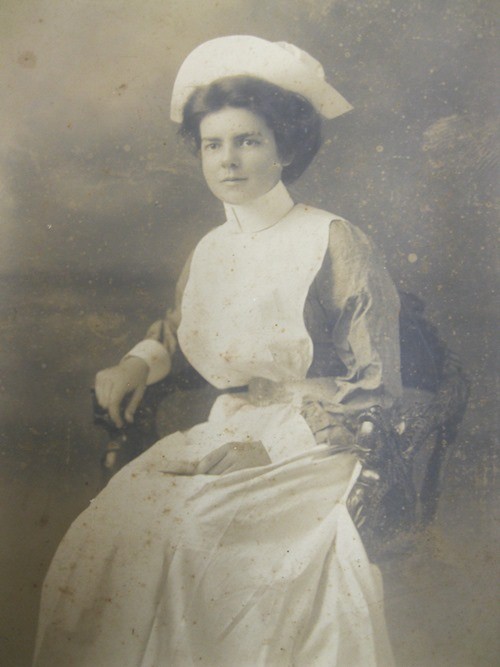
Nurse Constance Mabel Keys, 1914.
The Constance Keys Collection is one of the most significant and moving World War I nurse's collections which we hold. It consists of photographs, correspondence, diaries, Ephemera and objects, created and collected by this young Brisbane nurse, who through her compassion, generosity and bravery was loved and revered by the men whom she nursed.
Constance was one of the first four Queensland nurses to embark for Egypt in September 1914 on the troopship Omrah and she has left an enduring legacy and a moving account of her service during this most terrible of conflicts.
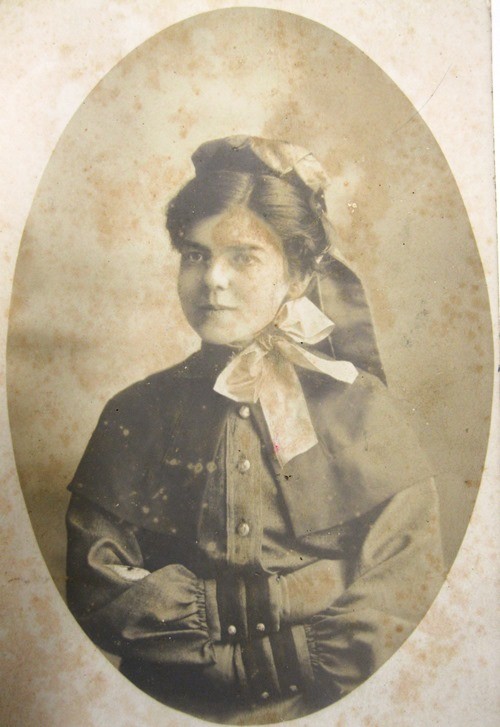
Nurse Constance Keys in military uniform, 1914.
In late 1914 she arrived in Egypt as a young and pretty 27 year old nurse, eager to see new places, and with a great enthusiasm for gaiety and fun. Those early months in Egypt, the calm before the storm, were a time of seeing new places and socialising with the young soldiers, many from the 9th Battalion and the 2nd Light Horse, whom she had known in Brisbane. She was also a great shopper and loved browsing through the bazaars for beautiful and rare items to send back home to her mother and sisters.
On March 3rd 1915 Constance wrote the following to her family in Brisbane:
Never in my life have I been photographed so much. I often think it will be hard to settle down after this gay life. Don't think I am boasting but I often have four or five invitations for one afternoon. Of course it is not all pleasure and on the long days of 12 hours we are very weary and just fit for bed.
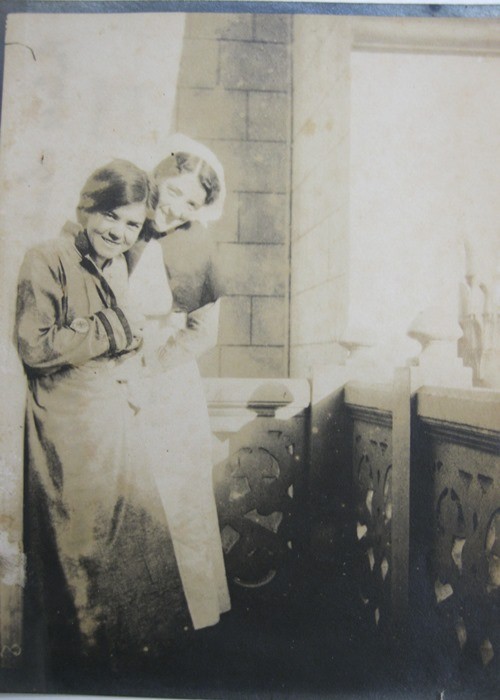
Constance Keys (right) and Nurse Hart at the 1st Australian General Hospital, Heliopolis, Egypt, 1914-1915.
Soon however the troops departed for the Gallipoli Peninsula, a strange silence settled over Cairo, and the nurses were busy preparing the hospitals for the wounded who would inevitably arrive. Constance writes on April 11:
It is dreadfully sad all them going. Last night I could hear them go by till long after midnight singing 'Don't Take Me Home', 'Whose Your Lady Friend', 'Tipperary', and cheering and cooeeing again and again. It is grand, but oh dear it is sad. How many will come back again? They are great fine fellows and speaking for myself I have known them well all these months and I have never had one moment's unpleasantness with any of them. We are always treated with the greatest courtesy'.
Constance wrote the following grim account of the arrival of the wounded from Gallipoli to her parents in Brisbane:
May 7, 1st A.G.H. Heliopolis
There have been sad happenings since I last wrote. I don’t know if the news is known in Queensland yet but the greater part of the men we came over with are either wounded or killed. The whole Battalion was practically cut to pieces. We did not get any wounded till Thursday April 29th. The hospital train came right behind the Palace – nine long white carriages with the Egyptian star and crescent on the side. Then the unloading commenced. Those who could walk were shown the way in & those on stretchers were carried over in the motor ambulances. I’ll never forget the sight of those hundreds of men walking & being carried in, one after the other in endless procession. There wasn’t a sound except footfalls then the wards commenced to fill up. The work of getting those weary men washed, wounds dressed & fed was a big undertaking, but it was done.
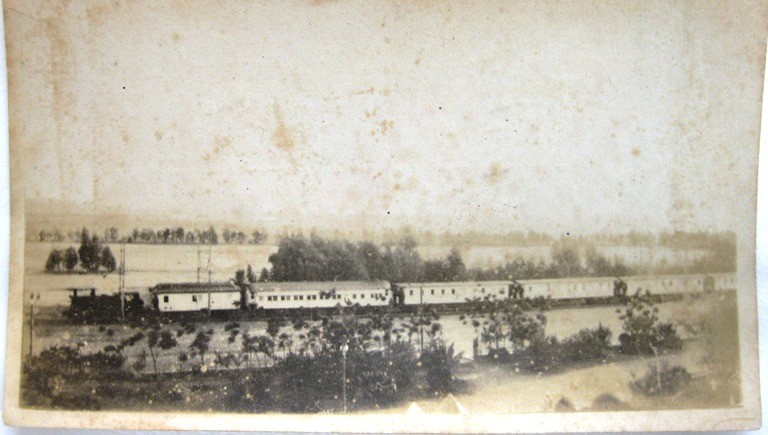
Hospital train bringing the Gallipoli wounded to the 1st Australian General Hospital in Heliopolis, Egypt, 1915.
Next day we heard we had to make room for more cases so those who were fit were got ready & moved on to another hospital. More trains in that day (Friday) with even more cases, fewer walking & more carried. Saturday the same again & forget about Sunday. Then for a few days no more trains till last night when another came in. I never before realized the value of the A.M.C. men. The motor ambulances are very comfortable & much easier for the sick and wounded to travel in than the old wagons. The Turks and Germans have no respect for the A.M.C. men but kill and wound all they can thus doubly crippling our men. There is no one left to carry off the wounded and many a man whose life could have been saved has been left to bleed to death. The stories the men tell are appalling but we are so busy we can only hear a little.
They say the country is terribly hard to tackle, great hills & cliffs & they often have to use ropes for climbing. It often seems hopeless trying to cope with the work but when I think of those hundreds & hundreds of men lying dead I just put on a fresh spurt & try & work harder. This war is too awful. There is so much more I should like to tell you but I am afraid I have written more already than I should. I think when all the news gets through there will be very few homes not in mourning.
The men are wonderfully brave and cheerful. One boy who has a badly smashed arm & has suffered horribly asked me this morning if he would be able to go back to the trenches in a week. Really I could cry all day at the sadness of it – but I have no time. If you could only see the misery in their eyes, looking at you like dumb animals, well it would break your heart. It is all too awful. How such things can be allowed to happen is hard to understand. Australians have made a great name for themselves & we have that to be proud of. They attempted and achieved the almost impossible & that should be some comfort to those left. The 9th with the 12th landed at 4 a.m. on April 25th. I never saw & suppose never will see such courage as these wounded men have shown.
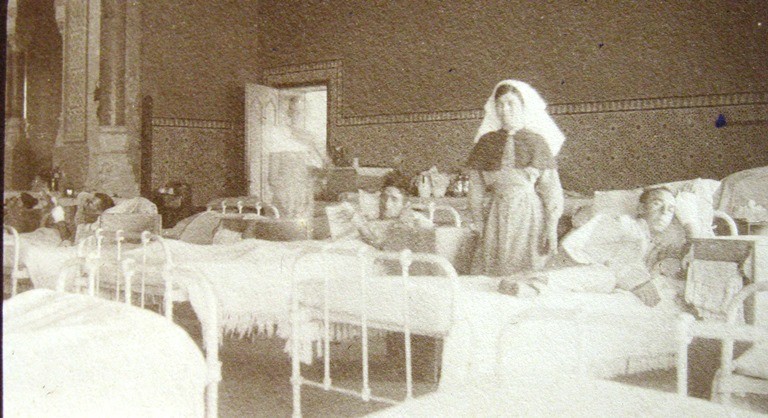
Nurse Constance Keys with patients from Gallipoli at the 1st AGH in Heliopolis, Egypt, 1915.
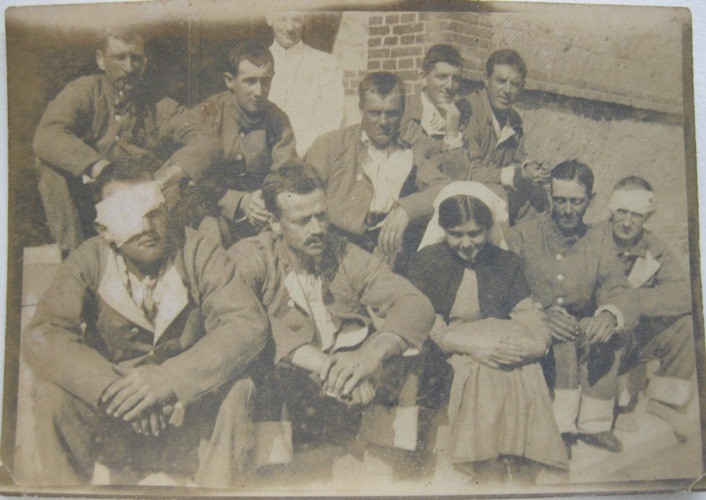
Nurse Constance Keys with wounded patients from Gallipoli, 1915.
Constance went on to serve in military hospitals in England, and on the Western Front, as sister-in-charge of the 2nd Australian Casualty Clearing Station. For most of 1918 she was never far from danger, treating the wounded near the front lines and enduring heavy shelling from the enemy. She returned to Australia in November 1919 and worked as matron of a convalescent hospital at Mount Gravatt, Brisbane, for returned soldiers. It was there that she met her future husband, Lionel Hugh Kemp Pennefather, a Gallipoli veteran, who was in charge of the farm section of the hospital.
For her devotion and bravery Constance was twice mentioned in despatches, received the Royal Red Cross, second and first class, and was awarded the Medaille des Epidemies from the French Government in recognition of her work in nursing French civilians and troops.
In 2022 we will be featuring 15 stories of service personnel from WWI to present. We encourage you to share your stories of service with us. To learn more about this campaign and how you can contribute, visit our website.
The extensive Constance Keys Collection is completely digitised and we invite you to view this rich and remarkable collection. http://onesearch.slq.qld.gov.au/permalink/f/1oppkg1/slq_alma21199982810002061
For more information:
Updated by Anzac Square Memorial Galleries
Comments
Your email address will not be published.
We welcome relevant, respectful comments.